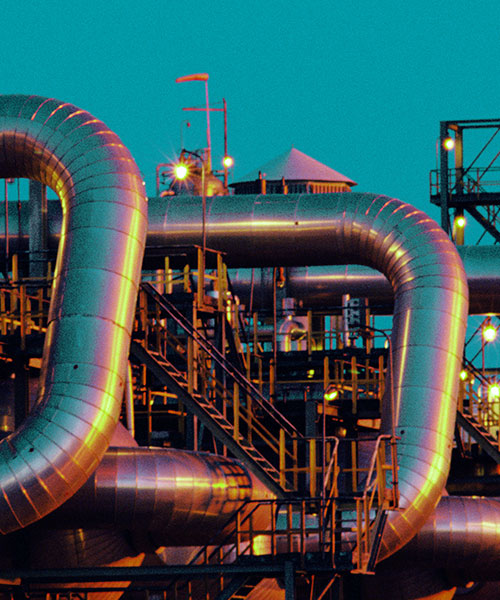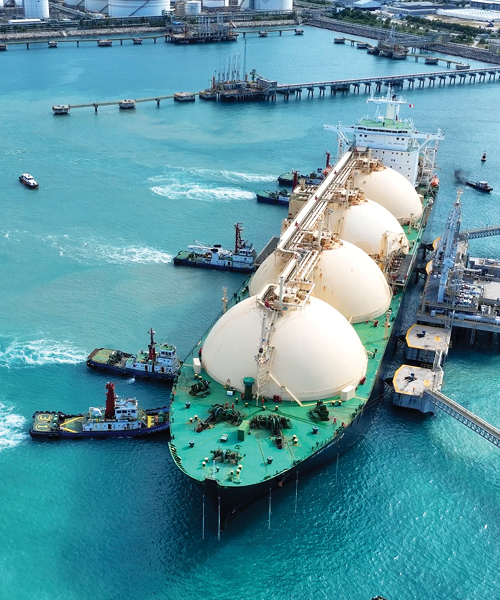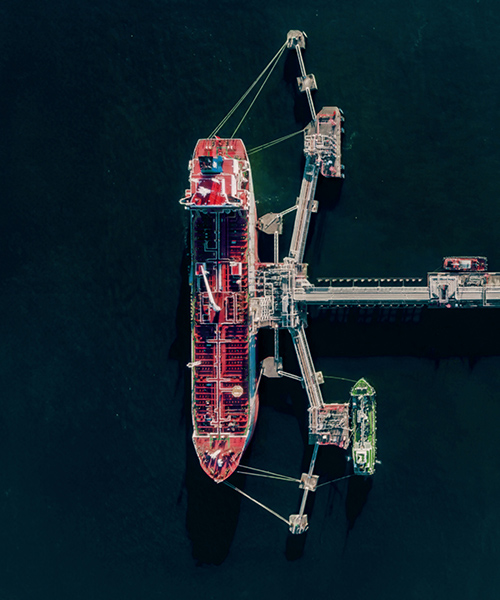August 02, 2024 • 6 min read
Energy transition: future proofing energy infrastructure in Saudi Arabia
How can energy operators in Saudi Arabia extract long term value from their existing energy infrastructure?
“The global shift towards net zero is accelerating, with new developments emerging daily that continue to transform global energy supply chains,” says Matt Wright, Senior Consultant, Worley Consulting.
“In Saudi Arabia, there’s growing focus on the role of natural gas and liquified natural gas (LNG) as a transition fuel to support current energy demands, while allowing time for alternative energy pathways, like renewables, to develop.
“There’s an opportunity for operators in Saudi Arabia to leverage their hydrocarbon expertise to re-assess and reinvent what their energy assets may look like. Especially to capitalize on the potential of the global renewable energy vectors.”
So what pathways are available?
The link between LNG infrastructure and renewable energy vectors
“A renewable energy vector, also known as an energy carrier, is a method or substance for storing and transporting energy from renewable sources, like solar or wind, for later use,” explains Wright.
“There’s a strong overlap between LNG infrastructure and the infrastructure needed for certain renewable energy vectors. This presents an opportunity for the repurposing of LNG infrastructure to help facilitate these renewable energy carriers.
“There are many attributes that renewable energy vectors, like ammonia, share with LNG. Both are transported and stored under cold liquid conditions. And their end use acts as fuel for domestic heating and power generation.
“In fact, LNG design originated from cryogenic developments in the ammonia industry, so it’s a logical starting point to explore further repurposing opportunities.”
Wright discusses some of these repurposing opportunities.
“For example, designing terminal unit operations such as ship loading and unloading, boil-off gas management, and regasification can be designed to accommodate both LNG and ammonia.
“However, for storage – a significant cost in LNG terminals – the high-nickel steel tank designs used currently for LNG, aren’t feasible for ammonia. So, there’s work to do to design tanks that can serve both purposes, without greatly increasing costs.
“In terms of other materials for LNG storage, aluminium is a possible alternative if we can prevent corrosion issues. A stainless steel membrane tank, designed for LNG, is also compatible with ammonia. And concrete-only tanks can, in theory, be used for ammonia storage, but are far from the norm,” adds Wright.
An alternative to repurposing infrastructure for ammonia, is conversion into liquid or pressurized hydrogen. However, this requires a significant shift in pre-investment cost.
Wright suggests a more realistic option is the addition of pressurized CO2 storage into the LNG terminal design and pre-investing in remaining LNG equipment, in a similar fashion to ammonia.
If the timeline for converting ammonia and CO2 to other forms or uses is extended, then LNG terminals could be effective in handling other cryogenic lower carbon fuels such as bio-liquified petroleum gas (BioLPG) and renewable dimethyl ether (DME). Both can be produced from renewable feedstocks and are credible transition fuels in the decarbonization of global energy and fuel systems,” he adds.
Factoring in repurposing options at the pre-investment stage
According to Wright, positioning these terminals for future fuels requires expanded pre-investment into LNG terminals before they’re built.
“Operators need further support at the pre-investment stage, to ensure terminals and assets are equipped to deliver LNG now and support renewable energy vectors in the future.
“This is key to the work we’re doing with our LNG customers, to help sustain their businesses today while also allowing for a smooth transition to renewables in the future. And preventing their assets from becoming stranded in a net zero energy mix,” he adds.
However, as Wright explains, with this opportunity also comes challenges.
“Any pre-investment must be cost effective and versatile enough to support multiple renewable energy carriers in the future. Market stability for renewable energy vectors is highly uncertain and there's some risk committing to renewable energy technologies that may not reach scale in the future.”
Extending the longevity of oil terminals
The ability to future proof is not limited to LNG assets. Existing oil terminal infrastructure can also be converted to be able to handle lower carbon fuels and renewable energy vectors.
“Producers can explore converting midstream oil facilities to support transport and storage of sustainable fuels such as e-methanol and sustainable aviation fuel. And they could also support renewable energy vectors like liquid organic hydrogen carriers (LOHC),” says Wright.
“Switching to a LOHC system for the transport and storage of hydrogen should be relatively simple for operators. However, the process requires specific operations; catalytic hydrogenation units to capture hydrogen and dehydrogenation units to release the transported hydrogen.
“Given the nascent technology and limited hydrogen carrier potential, the cost associated with LOHC doesn’t yet make commercial sense at scale. But it remains an option to transport and store hydrogen without the onerous equipment specifications and high cost needed for liquid and pressurized hydrogen.”
Exploring the potential of renewable energy hubs
Saudi Arabia has become a key player in the planned growth in renewables. With highly developed infrastructure and favorable weather conditions, the country is positioning itself to create a number of mega scale renewable hubs.
“Through collaboration, these hubs can allow for cost synergies and highly optimized carbon footprints for developments by sharing infrastructure. In particular, it addresses the challenges related to electrical power,” says Wright.
“LNG liquefaction – similar to H2, CO2, or ammonia liquefaction – requires a large amount of power to run the refrigeration systems. And needs to be sourced responsibly to avoid the carbon footprint negating the perceived benefit of lower carbon and renewable energy vectors.
“This can be achieved either by installing renewable power generation or hydrocarbon fueled generation with carbon capture. This further strengthens the idea of a hub where abundant natural gas supply can be used for power generation, with captured CO2 sent to sequestration nearby. Alternatively, renewable (green) hydrogen and ammonia produced in-Kingdom could be used to provide renewable power for multiple industries in the hub.
“Water is also a challenge in the energy transition, but conservation within dry climates, like Saudi Arabia, is critical. Providing a co-located hub can enable water to be sourced and returned sustainably with minimal impacts on local ecology. Close proximity to power generation can further improve the energy efficiency within the hub by providing waste heat recovery to generate hot water and steam.”
Saudi Arabia’s interest in developing renewable energy hubs – in addition to developing its LNG market – presents an opportunity to develop both simultaneously.
“By co-locating these hubs near LNG sites, both industries can grow together, sharing marine port facilities, electrical power, utilities, and sometimes equipment. Allowing for sustainable and cohesive development and further accelerating the diversification of the Kingdom’s energy industry,” he adds.
Educating the industry on renewable energy vectors
There are numerous renewable vector terminals under consideration, but these are still very much produced and used locally.
But Wright is convinced of the opportunities awaiting producers to think about repurposing potential, even while investing in greenfield natural gas infrastructure.
The first bulk shipment of LCO2 is due to take place this year with the start-up of Northern Lights Phase 1. But even this is limited to 1.5MTPA compared to the amount predicted to be shipped globally by Rystad of 90MTPA by 2030.
The world’s first liquid hydrogen carrier, Suiso Frontier, completed its maiden voyage in 2021. Ammonia appears to be the most promising near-term prospect, with around 20MTPA already moved by ship each year, and the opportunity to produce much more.
Mega scale international transport and storage of renewable energy vectors will require a robust regulatory framework and global alignment. And we’re still heavily relying upon historic regulations which are being shown to be inadequate leading to tighter local control and the risk of divergence.
“But thinking about future fuels – while designing fossil fuel infrastructure – will ultimately reduce the risk of new infrastructure and will help Saudi Arabia remain an energy powerhouse today, and in the future.”






